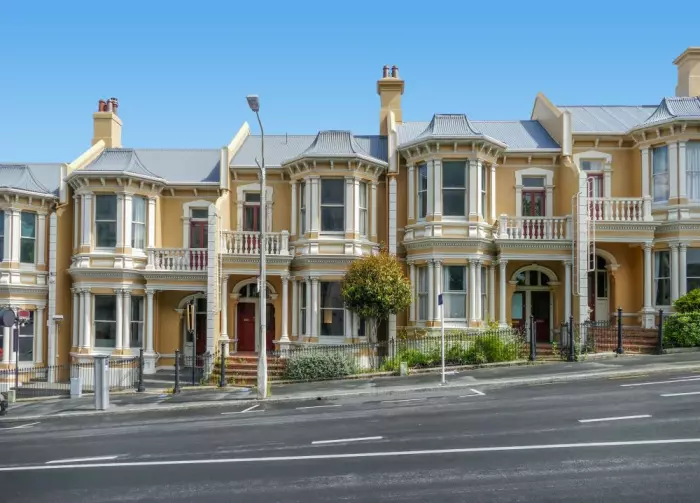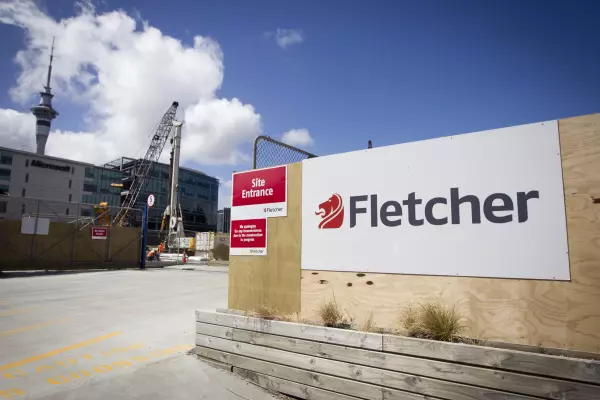House prices flatlined to a net-zero monthly increase across the country in March, on the back of increasing interest rates, tighter lending conditions and affordability constraints.
The latest Corelogic house price index shows deteriorating selling conditions across the board, with the pace of annual growth to March slowing to 23.4%, down from last September's annual peak of about 30.4%.
While Corelogic said its index is for March, the data it is based on are settled sales that went unconditional as long ago as November and its index is prepared on a three-month rolling average basis, making its data considerably older than the Real Estate Institute's data, which totals the number of sales that went unconditional the previous month.
While each of the six main centres experienced a slowdown in house prices, Dunedin's was more pronounced, with rolling three-month sales data down 1.3% from February.
That saw annual house price inflation in the Otago city at 12.5% with the average house price at $698,879. At the other end of the chart, Tauranga saw a slight month-on-month price rise of 0.6%, with annual inflation tracking at 32.1% and the average house price at $1,185,907.
Auckland's annual rate of growth slowed to 24.7%, although its monthly rate of growth remained the strongest of the main centres, at 1.4%, led by a 2.6% increase in Auckland City and 2.3% in the Rodney district.
Corelogic's head of property research, Nick Goodall, said some of the areas which saw the "greatest deterioration" in affordability are now also at risk of the greatest vulnerability.
"The impact of tightening credit and increasing interest rates has reduced the pool of buyers who are willing and able to pay recent prices and this has led to a reduced number of property transactions.”
The property analytics' firm's preliminary sales figures for March suggest the month should end with between 7,000 to 7,500 sales once the full population of transactions flows through.
While this would be a lift on February's 5,597 sales, it's still 10%-to-20% below the long-term average for March.
Goodall said longer selling periods, combined with expectations of weaker conditions ahead, put buyers in a "stronger negotiating position".
A correction looming?
He said there was some concern as to the ability of recent home buyers, and in particular first home buyers, to pay higher mortgage repayments with interest rates continuing to track up. Most mortgage terms are more than 1.5 percentage points higher than nine months ago.
Goodall said assuming 50/50 split terms on the average mortgage, which according to the Reserve Bank of NZ is $550,000, could translate to an extra $100 per week in mortgage repayments, on top of high inflation which has caused the current cost of living crisis.
“But it should also be acknowledged that bank serviceability tests exist to help prepare borrowers for this eventuation and deposit requirements mean the majority should have 20% equity to help guard against the potential for falling home prices."
Given recent growth, a 10% fall in prices would only take them back to the level of July last year, with a 20% fall back to a year ago.
"No one is forecasting a 20% drop in property prices, while it’s also important to note that the largest peak to trough fall in national average values in recent history was ‘only’ 10% during the global financial crisis."
Further mitigating any major housing price corrections is also the tight labour market, he said.
"If unemployment stays anywhere near as low as it currently is, then the likelihood of motivated or forced sales should remain low, helping to guard against a severe downturn."
Applications down
Reflecting the tight employment conditions, the latest SEEK employment index shows that applications per job ad were down a third in February, compared to February 2019. That was while national job ad numbers were up 46% over the same period.
The biggest month-on-month increase to March was in hospitality, up 21% on the expectation of relaxed covid trading rules. Job ads for retail and consumer products were up only 1% from February, that sector was up 43% on pre-covid recruitment. Manufacturing and transport ads for March were up 60% on March 2019.
This story has been modified to add in a third par to explain how Corelogic's index is compiled.














